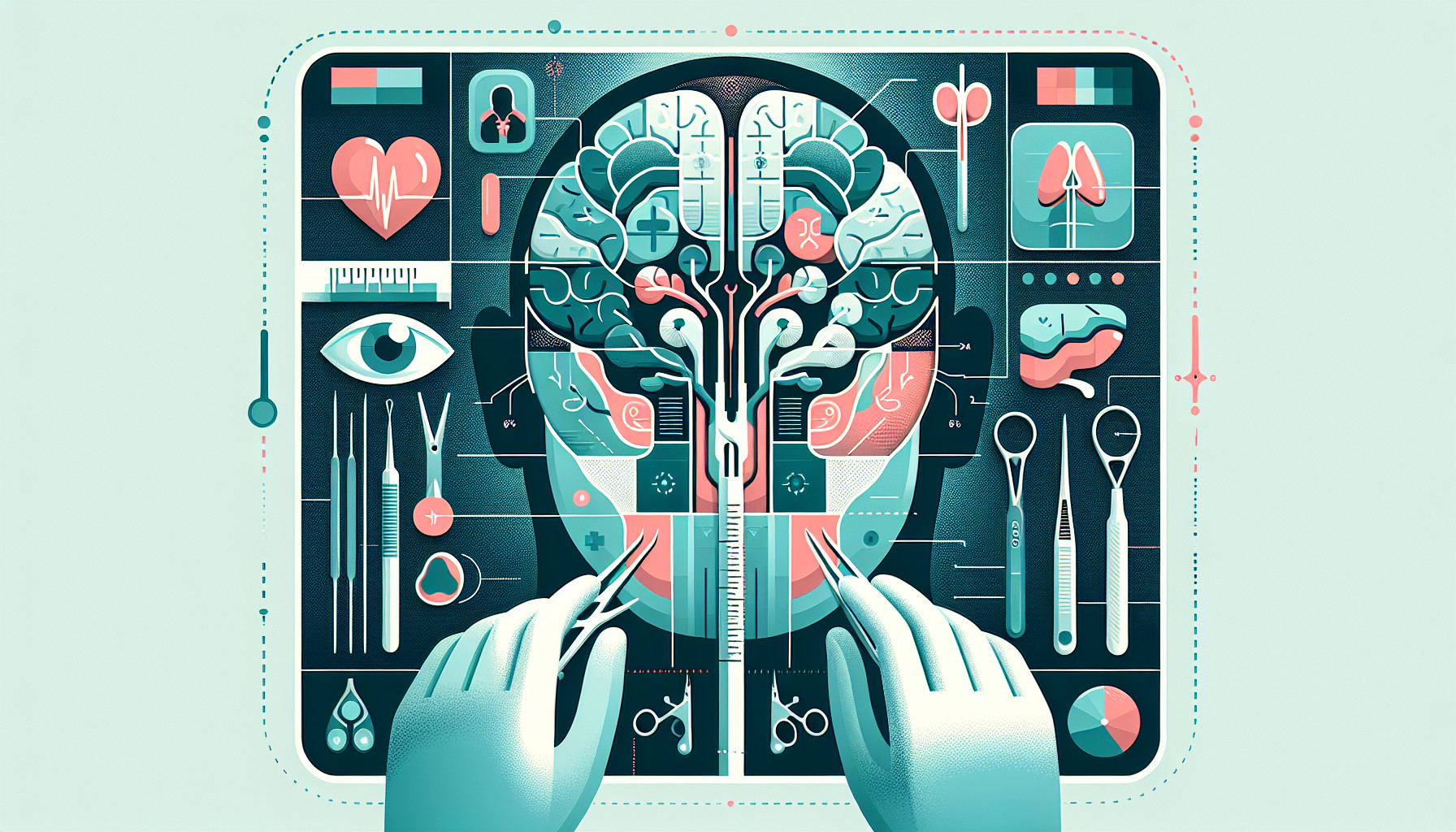Our Summary
This research paper discusses a severe complication that occurred after a man had reconstructive surgery on his ear. This condition, known as rhabdomyolysis, can happen after very long surgeries and can cause serious damage to the kidneys, potentially leading to kidney failure. Despite this, there’s not much documented about how often rhabdomyolysis happens after ear reconstruction surgery.
The man in the study, who was in his forties, had an eight-hour operation under general anesthesia to reconstruct his ear after it was amputated due to an assault. Sadly, he developed rhabdomyolysis afterwards, which led to serious kidney failure and then a heart attack from which he could not be revived. An autopsy didn’t show any other problems, but a closer look at his tissues showed damage to his kidneys and muscles consistent with rhabdomyolysis.
Previous studies have found a link between the length of the surgery and rhabdomyolysis, and this case shows that it can happen even in surgeries that aren’t on the kidneys or muscles. The fact that rhabdomyolysis and kidney injury happened together suggests that they often occur at the same time, and more needs to be done to prevent it from happening. It’s important for doctors to be aware of this risk and to take steps to prevent and treat it early on.
FAQs
- What is postoperative rhabdomyolysis and how can it be a complication of otoplasty?
- How does an extended duration of surgery contribute to the incidence of rhabdomyolysis?
- What are some strategies for the prevention and management of rhabdomyolysis following ear reconstruction surgery?
Doctor’s Tip
One helpful tip a doctor might tell a patient about otoplasty is to discuss with them the importance of maintaining proper positioning during the surgery to prevent complications such as rhabdomyolysis. It is important for the patient to understand the potential risks associated with prolonged surgery and to follow postoperative instructions carefully to minimize the risk of complications. Regular follow-up appointments with the surgeon are also important to monitor the healing process and address any concerns promptly.
Suitable For
Patients who are typically recommended for otoplasty are those who are unhappy with the appearance of their ears, such as individuals with prominent ears, misshapen ears, or ears that are asymmetrical. Otoplasty is often performed on children and adolescents, as well as adults who desire to improve the appearance of their ears. Additionally, otoplasty may be recommended for patients who have experienced trauma or injury to the ear, and require reconstructive surgery.
Timeline
Before otoplasty:
- Patient consultation with a plastic surgeon to discuss the procedure and goals
- Preoperative assessment and planning for the surgery
- Patient preparation, including instructions on fasting and medication management
- Surgical consent and signing of necessary documents
After otoplasty:
- Immediate postoperative care in the recovery room, monitoring vital signs and pain management
- Discharge instructions and follow-up appointments with the surgeon
- Swelling, bruising, and discomfort in the ear area for a few weeks post-surgery
- Gradual improvement in the appearance of the ears as they heal and settle into their new position
It is important to note that complications, such as postoperative rhabdomyolysis, are rare but can occur in some cases, emphasizing the need for careful monitoring and prompt intervention in case of any unusual symptoms or complications.
What to Ask Your Doctor
What are the potential risks and complications associated with otoplasty surgery, including the risk of rhabdomyolysis?
How long is the expected duration of the surgery, and what measures will be taken to minimize the risk of prolonged surgery and potential complications like rhabdomyolysis?
What preoperative and postoperative care measures can be taken to reduce the risk of developing rhabdomyolysis following otoplasty surgery?
How will my kidney function be monitored during and after the surgery to detect any signs of rhabdomyolysis or acute renal failure?
What symptoms should I watch out for that may indicate the development of rhabdomyolysis, and when should I seek medical attention if I experience these symptoms?
Are there any specific factors in my medical history or health condition that may increase my risk of developing rhabdomyolysis after otoplasty surgery?
What steps will be taken to manage and treat rhabdomyolysis if it occurs following the surgery, and what is the expected outcome in such a situation?
How often will follow-up appointments be scheduled to monitor my recovery and assess any potential complications, including rhabdomyolysis?
Can you provide me with information on the incidence of rhabdomyolysis following otoplasty surgery and any relevant statistics or research findings on this topic?
Are there any specific precautions or lifestyle changes I should consider to reduce my risk of developing rhabdomyolysis or other complications after undergoing otoplasty surgery?
Reference
Authors: Abouzahir H, Belhouss A, Benyaich H. Journal: Forensic Sci Med Pathol. 2024 Sep;20(3):990-998. doi: 10.1007/s12024-023-00701-7. Epub 2023 Aug 25. PMID: 37624532
